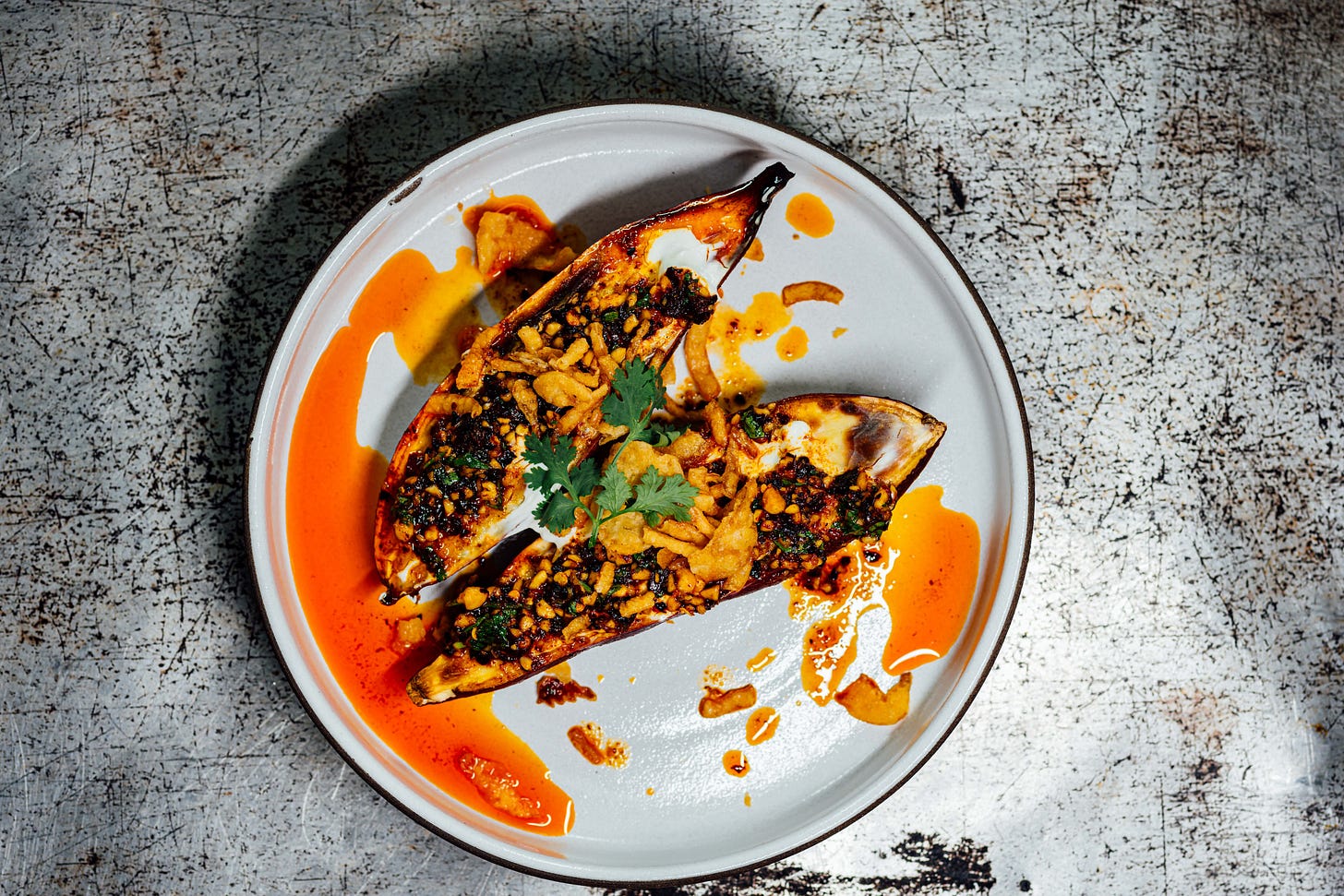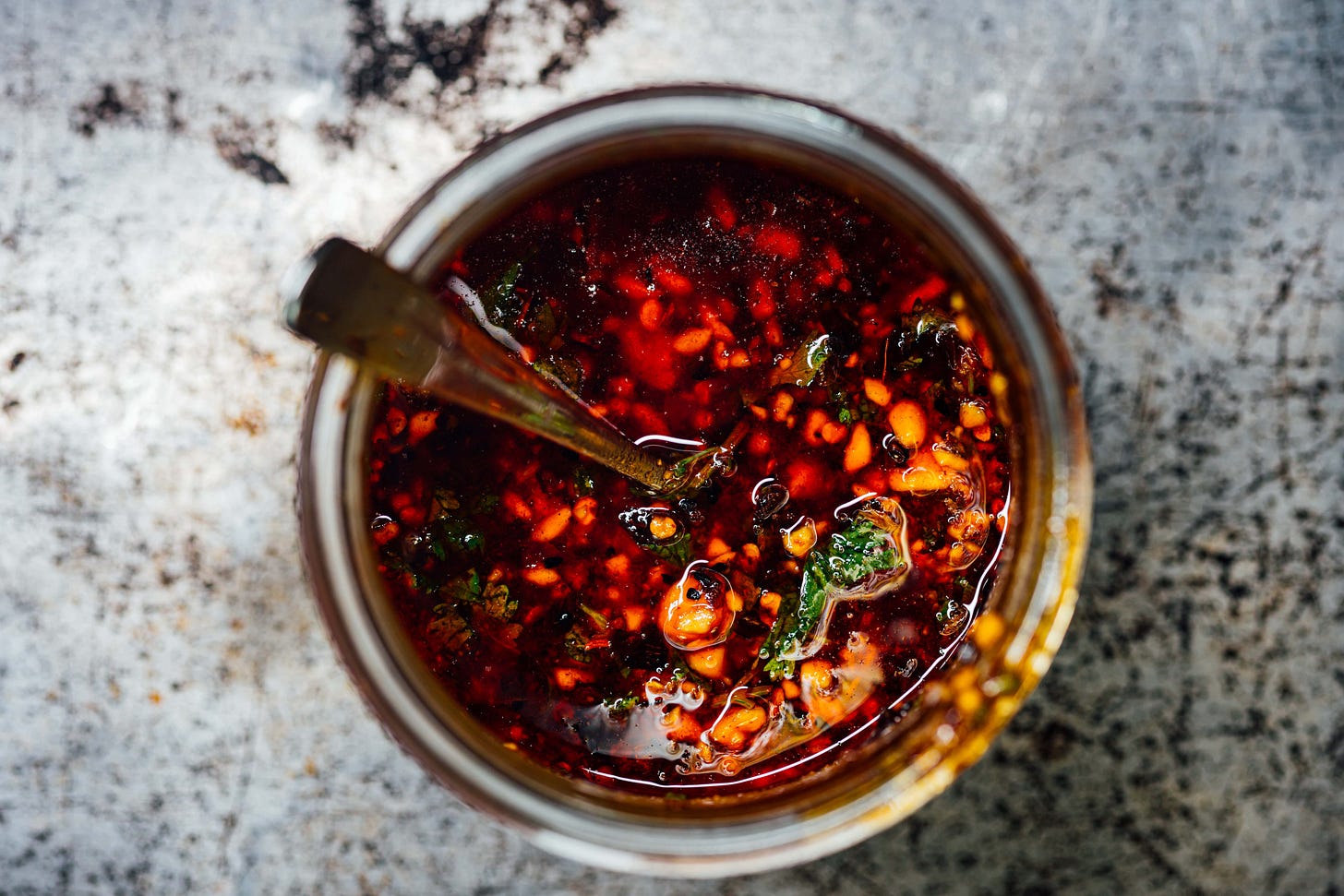The Smart Cook’s Guide to Freezing Food (Without Ruining It)
How to freeze proteins, veggies, and flavor-packed sauces the right way—plus a smoky salsa macha and a weeknight dish you’ll crave again and again 🔥
Welcome to The Flavor Files! 🎉This is where my love for cooking, flavor, and food science all come together—because delicious food is even better when you understand a little of the magic behind it.
Looking for more recipes? You’ll find them all at Nik Sharma Cooks. Still need a copy of my latest cookbook, Veg-Table? You can grab it here—it’s filled with veggie-driven inspiration. 🌱✨
You might spot a few affiliate links sprinkled throughout this newsletter; they help keep the spice—and the science—flowing.
Now, let’s dive in. 🔥
A Freezer Full of Intentions
When I shop, whether for work or just the thrill of beautiful ingredients, I almost always buy more than I need. Some of it is instinct, some is habit, and some is the quiet knowledge that I’ll want those things later, when I’m too tired to face the grocery store or when a recipe needs one last test. So I freeze what I can. Vegetables blanched, meats portioned, sauces tucked away like love notes to my future self.
Freezing has become more than just a practical move, my version of self-care that’s both frugal and freeing. Especially now, when food costs feel like they climb higher each week, it’s a way to stretch what I have and waste less. A safety net. A second chance. A reminder that flavor doesn’t always need to be fresh-picked, it just needs to be well-kept. This week, I share my brief guide to how I freeze food at home.
🧊 The Smart Cook’s Guide to Freezing Proteins and Veggies (The Right Way)
Freezing is like hitting pause on food spoilage, but only if done right. Here’s how to stash proteins and veggies in your freezer like a pro, with tips grounded in USDA food safety guidelines.
For Proteins: Freeze Fast, Pack Smart
1. Start With Clean Hands & Fresh Meat
Always freeze meat, poultry, or seafood before the “use by” date. The USDA says that freezing does not kill bacteria; it only pauses their growth. So, don’t freeze meat that's already questionable, and once thawed, don’t refreeze it; use it soon.
Do not freeze whole eggs; the shells can crack. If, for some reason, a whole egg is frozen in the shell (and if the shell didn't crack), you can hard-cook the egg, but you will not be able to use the yolks. Freezing changes the texture of the yolk, making it very thick and syrupy, and it won’t behave like a fresh egg yolk in recipes (freezing encourages the egg yolk proteins to aggregate, and the lipids are released).
USDA Tip: Freeze raw meats within 1 to 2 days (ground meat, poultry) or 3 to 5 days (steaks, chops, roasts) of buying.
2. Ditch the Grocery Packaging
Store packaging is thin and prone to freezer burn. Wrap tightly in plastic wrap or foil, then slide into a freezer bag or vacuum-seal for best protection.
Hack: Label with date and weight. Add marinade or spice rub before sealing to make meal prep easier later.
3. Freeze Flat
Lay bags of meat or fish flat to freeze quickly and stack efficiently. I do this by keeping them on a flat tray or baking sheet and taking out the tray after the food is frozen.
Quick freezing results in smaller ice crystals, which leads to a better texture when thawed.
For Vegetables: Blanch Before You Freeze
1. Clean and Cut Evenly
Wash thoroughly, then chop the pieces into uniform sizes. Uneven sizes = uneven cooking later.
2. Blanch First, Freeze Later
Blanching (brief boiling or steaming, then plunging into ice water) deactivates enzymes that cause off-flavors, color loss, and mushiness in frozen veggies.
Examples
Broccoli florets: 3 minutes
Carrots: Blanch 2 to 3 minutes
Corn kernels: 4 minutes
Green beans: 3 minute
Skip blanching only for onions, bell peppers, and herbs; they freeze well raw.
3. Dry Thoroughly
You can use a clean dish towel or a salad spinner. Excess moisture = ice crystals = soggy veggies.
4. Freeze on a Sheet Pan First
I’ve found that vacuum bag stores produce the best.
Spread the veggies in a single layer on a tray, freeze until firm, and then transfer them to bags. This prevents clumping, so you can grab a handful when needed.
🕐 Safe Storage Time (as per USDA):
Get more information on Individual Types of Veggie Storage here at Colorado State University.
🧼 Thawing 101: Safety First
Best: Thaw in the fridge (slow but safe).
Faster: Submerge the sealed bag in cold water and change it every 30 minutes.
Avoid: Countertop thawing, as it risks the "danger zone" (40°F to 140°F/4°C to 60°C), where bacteria multiply.
If you decide to microwave thawed food, please cook it immediately, as some parts of the food can warm up in the microwave.
✅ Final Tips:
Keep your freezer at 0°F [-18°C] or lower.
Don’t refreeze raw proteins after thawing (unless cooked first).
If it smells bad, you can just throw it. Some foods develop funky odors during storage because fats can go rancid.
FIFO = First In, First Out. Use older items first.
Peanut Salsa Macha & Roasted Japanese Sweet Potatoes with Peanut Salsa Macha and Labneh
What is Salsa Macha
A few weeks ago, I had dinner at Holbox, a small seafood restaurant tucked into the heart of DTLA. The kind of place where the scent of charred chiles and sea brine lingers in the air, and every plate feels like a revelation. One dish, in particular, stayed with me: a delicate tortilla cradling sweet crab meat, blanketed in a deep, rust-colored peanut salsa macha. It was rich and smoky, with just the right amount of heat, luxurious without trying to be.
I left thinking about that salsa. The way it clung to the crab, the warmth it left on my tongue. That night, I came home and headed straight to the kitchen, determined to recreate it, not the whole dish, just the essence. Something simple, quick, and unforgettable. Roasted Japanese sweet potatoes meet their match: a cool, creamy scoop of salted labneh, draped in smoky peanut salsa macha. Crispy fried onions add crunch, fresh cilantro brings lift, and every bite lands exactly where it should.
Salsa macha is an intensely flavorful, nutty, and spicy Mexican chili oil, more of a condiment than a sauce, originally from the state of Veracruz. However, it’s strongly associated with the cuisine of Oaxaca and parts of Jalisco. It reminds me of Asian chilli crisps, but smoky, earthy, and sometimes with a whisper of sweetness.




